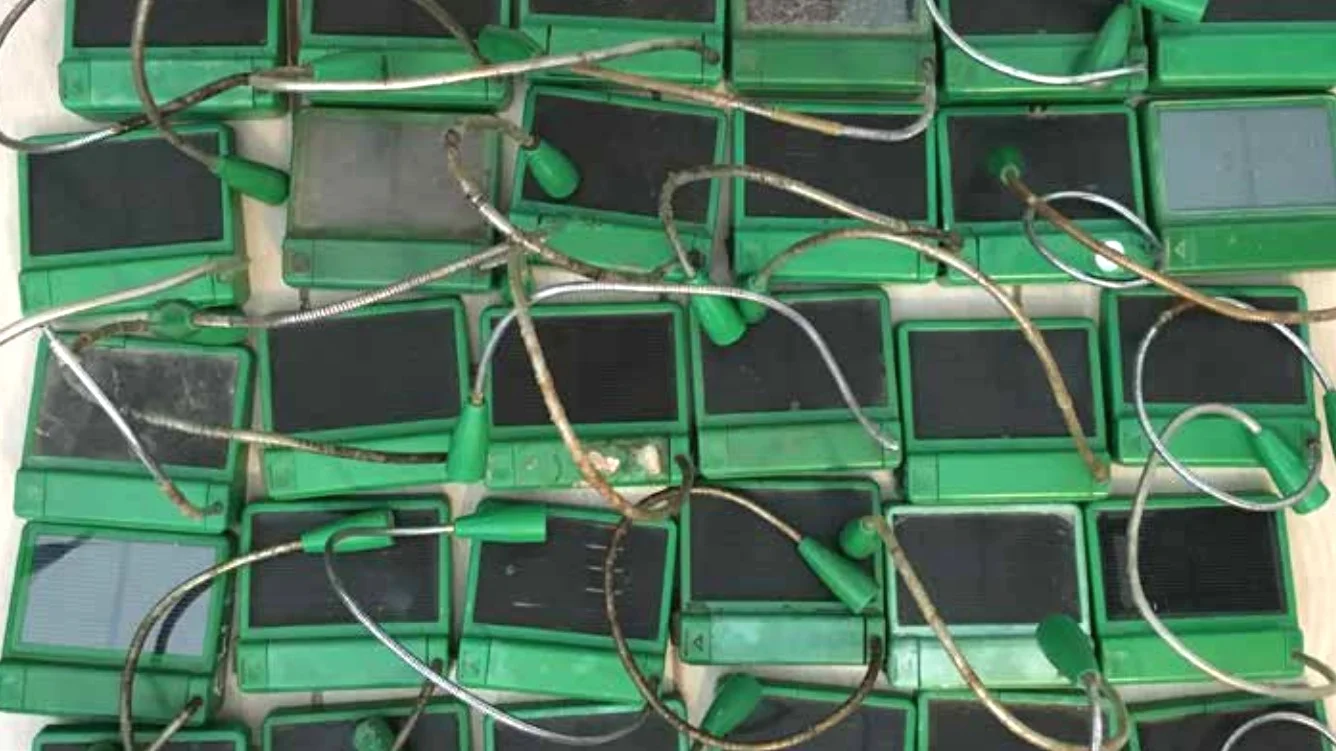UNITE TO LIGHT | SOLAR LUKE LIGHT
Designing a more durable solar lamp for people in developing (and developed) countries around the globe.
Client/Collaborators
Unite to Light
Company/Partner(s)
Gisela Voss (founder of B.Toys), WE Charity
Approach
Competitive Research, Evaluative and Generative Research, Product Development
Methods/Tools
Ethnographic Research, One-on-One Interviews, Rhino CAD Development
Objective
1.2 billion people live without electricity. Life lived in darkness perpetuates illiteracy when students can’t study after dark, illness from smoke inhalation from Kerosene lamps, poverty from limited education and expensive fuel (which can consume a third of a family’s income), and social isolation. A little light, in contrast, enhances education opportunities after dark, provides sense of companionship and safety when walking to the toilet or to herd goats, and promotes community engagement after dark. (Learn about Luke's Lights.)
Unite to Light (UTL) wanted to understand how people were using their solar lamps in different parts of the world and what impact different environments and uses were having on the longevity of the lamps. A key design constraints for this phase of the project were, 1) that only minor adjustments could be made to the form and 2) any changes to the form and function of the light for the betterment of one user, could not unintentionally inhibit another’s use.
Our goal was to develop a long-term design strategy for UTL solar lamps and chargers by surfacing unmet needs of users around the world, and work on near term solutions by designing pivotal improvements to the current solar lamp’s usefulness and durability.
Outcome
Insights gained from field research, damaged lamps, and interviews informed the redesign of the lamp and helped to defined near-term and long-term product solutions for UTL. In collaboration with Gisela and engineers in China, we designed modifications into the existing lamp to expand its usage as a room light and improve durability.
New lamps will be tested with users in various parts of the world to evaluate the usefulness, usability/durability, and desirability of the revised lamp.
Process
Interviews + Competitive Review
Initial interviews with the President of UTL, Gisela Voss, and WE’s Chief Development Officer and Haiti Country Director, who had distributed solar lights to Haiti and other countries provided initial insight into opportunities for redesign. Additionally, a competitive review of currently available solar lamp solutions was done to understand current strengths and weaknesses (cost, features, packaging, charging options, etc.) of similar products.
Ethnographic Interviewing in Haiti
In coordination with WE and Gisela Voss, I conducted in-field interviews. In exchange for bringing any/all damaged solar lamps, Haitian families from three different villages shared their experiences with the lamps in group settings. They revealed benefits/limitations of the lamps, typical uses (beyond the intended use of “study”), and shared ideas on ways we might improve the usability and value of the lamp in their daily lives.
The collected broken lamps were sorted based on the type of damage: melting, cracking, broken necks, etc.
Unite to Light Partner Interviews
One-on-one interviews were conducted with UTL partners who have distributed solar lamps around the world to understand the experience of distributing lights and help us define must haves, nice to haves, and game changing solutions to improve existing UTL solar lamps and chargers. This was meant to ensure that one change made to the form to meet the needs of Haitians wouldn’t impact or take-away from a key feature other users depended on.
What We Learned
The ideal solar solution for in-country users and distributors is a portable, waterproof, room light, with flexible positioning.
Most communities in places like Haiti, Nepal, and Mexico desire a broad, diffused light and wanted to remove the flexible neck. However, the neck of this lamp can’t be removed because it served a key purpose to nomadic midwives in Africa who wrap it around their necks to birth babies hands-free. So, we designed a pocket groove in the base of the lamp so the neck can fasten into itself. This will allow the lamp to be hung more securely around a hut beam, up high for room lighting, and for the neck to be more protected when not in use.
Portability and power can’t be compromised. Portability is important for nomadic villages and UTL partners (who have to carry and distribute lights from suitcases), but above all else, the device has to be powered from a single day’s charge. Additionally, the solution has to meet the needs of multiple users living in different environments – huts, tents, mud floors, etc. By providing flexibility in how the light can be positioned we can increase the usefulness and usability of the small light for most users so it can be situated high, like a lightbulb, or on a desk for reading.
Attributes of the revised light:
Increased waterproofing
Simple on/off button and the overall form
The groove in the base allows the neck to fasten into itself for a secure hold
Reinforced neck with rubber over mold
Feet (with cut-through) lift the base off ground and provides additional options for hanging
Dream Big, Do Bigger.
I believe in the big impact that these little lights have in promoting community and improving the quality of life, health, and education of adults and children around the globe.




